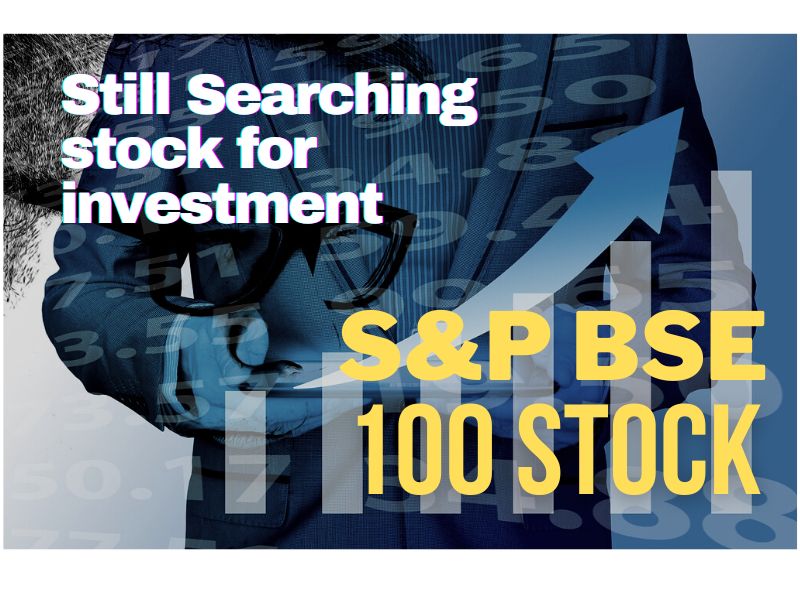INDIAN INDICES - S&P BSE 100
The S&P BSE 100 is a stock index that measures the performance of the 100 largest and most liquid companies traded on the Bombay Stock Exchange (BSE). The index was launched on August 8, 2005 with a base value of 1,000.
The S&P BSE 100 index tracks the movements of large-cap stocks in the Indian stock market and is widely considered to be a good barometer of the overall market performance. The index is also used as a benchmark by many mutual fund schemes and pension funds in India.
The S&P BSE 100 index has been one of the best performing indices in the world over the last decade. It has delivered an annualized return of 15.6% since its inception in 2005, which is significantly higher than the returns from other major global indices such as the Dow Jones Industrial Average (DJIA) and the S&P 500 Index.
The strong performance of the S&P BSE 100 index can be attributed to various factors, including favorable macroeconomic conditions in India, continuous reform measures undertaken by the government to improve business environment, and positive corporate earnings growth.
History of the S&P BSE 100
The S&P BSE 100 is a stock market index of India. It comprises the top 100 companies by market capitalization listed on the Bombay Stock Exchange. The index was launched on 25 April 2000 with a base value of 1,000 points. As of 31 August 2020, the index trades at 46,274.95 points. The S&P BSE 100 has been one of the most popular indices in India since its inception and is used by a number of investment products including mutual funds and exchange-traded funds. The index is also used as a benchmark for equity portfolios in India.
How to Invest in the S&P BSE 100
If you're looking to invest in the S&P BSE 100, there are a few things you'll need to consider. First, you'll need to decide which investment strategy best suits your needs. There are many different ways to invest in the S&P BSE 100, so it's important to find one that matches your goals and risk tolerance.
Once you've decided on an investment strategy, you'll need to research the individual companies that make up the index. This includes understanding their business models, financial statements, and competitive landscape. Doing your homework will help you identify which companies are best suited for your portfolio.
When you're ready to start investing, there are a few different options available. You can buy shares directly from a company or through a broker. Alternatively, you can invest in an exchange-traded fund (ETF) or index fund that tracks the S&P BSE 100. Whichever route you choose, be sure to monitor your investments and rebalance as needed to stay on track with your goals.
Benefits of Investing in the S&P BSE 100
Investing in the S&P BSE 100 provides investors with a number of benefits, including exposure to some of the largest and most successful companies in India, as well as a diversified portfolio. Additionally, the index is heavily weighted towards large-cap stocks, providing investors with stability and lower risk.
S&P BSE-100 List of stocks
The S&P BSE 100 index is a great indicator of the overall health of the Indian economy. It consists of 100 large and well-established companies that are leaders in their respective industries, making it a reliable gauge of how the economy is performing. Since its inception in 1995, the index has steadily risen, indicating that the Indian economy has been growing steadily over the years. In recent years, there have been some fluctuations in the index due to global economic conditions, but overall it has remained strong. If you are looking for an investment opportunity in India, then investing in companies that make up the S&P BSE 100 index is a good way to go. These companies are leaders in their industries and are well-positioned to continue growing as the Indian economy continues to develop.
Recent Posts:-
- how to find best stocks
- how to select good mutual fund
- How to Choose the Best Mutual Funds with No Fees
- Mutual Fund –What Is Hedge Fund
- How To Pick A Good Mutual Fund
- Mutual fund Net Asset Value (NAV)
- Type of Mutual Fund Schemes
- Advantages Of Investing In Mutual Funds
- Why mutual fund subjected to market risk
- Exchange traded funds Vs Mutual Funds
Recent Posts
- how to find best stocks
- how to select good mutual fund
- How to Choose the Best Mutual Funds with No Fees
- Mutual Fund –What Is Hedge Fund
- How To Pick A Good Mutual Fund
- Mutual fund Net Asset Value (NAV)
- Type of Mutual Fund Schemes
- Advantages Of Investing In Mutual Funds
- Why mutual fund subjected to market risk
- Exchange traded funds Vs Mutual Funds
